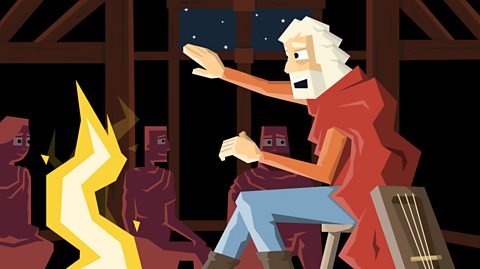Where did the Anglo Saxons come from?
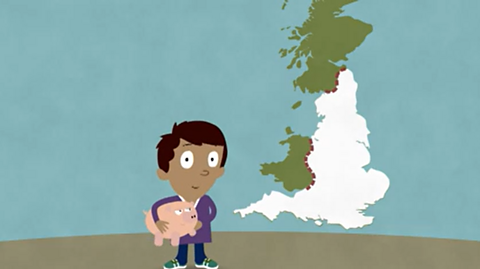
The last Roman soldiers left Britain by AD410. New people came to Britain in ships across the North Sea ā the Anglo-Saxons. The Anglo-Saxon age in Britain was from around AD410 to 1066.
- The Anglo-Saxons were a mix of tribes fromāÆGermany, Denmark and the Netherlands.
- The three biggest were the Angles, the Saxons and the Jutes.
- The land they settled in became known as 'Angle-land', or England.
- They brought Germanic languages and new customs and dress.
If we use the modern names for the countries they came from, the Saxons were German-Dutch, the Angles were Southern Danish, and the Jutes were Northern Danish. They arrived over a number of decades.

Watch: Introduction to the Anglo-Saxons
Find out where the Anglo-Saxons came from, what they were like and what they left behind
Excuse me. Yes, you! Would you like to learn more about the Anglo-Saxons? Great!
Well letās start at the beginning. The Anglo-Saxon age in Britain was about 410 to 1066 and they originally come from Germany and Scandinavia.
Some historians say they were driven from their homes by rising floodwaters.
They were not one united people, but lots of warring tribes that settled in different parts of Britain.
The biggest tribes were the Angles, Saxons and the Jutes.
But they werenāt always at war. They were mostly farmers who lived in wooden huts. Children here would generally not go to school.Girls would help around the home and boys learned the skills of their fathers.
I would take a step back if I were you.
The Anglo-Saxons loved making things from wood. And they made intricate jewellery and metalwork.
We still see their influence today, with words like, cow, cheese, werewolf and ghost.
Plus several place names and even areas that still exist. They even laid the foundation for the creation of England.
There we go, the history of the Anglo-Saxons in a matter of minutes, from invaders to settlers, to makers. How enjoyable was that? Plus you have made a new friend.
Ohā¦ hold on, I think his mother wants a word with you.
Fantastic! Another successful day, look what happens when history happens to you!
When were the Anglo-Saxons in Britain?
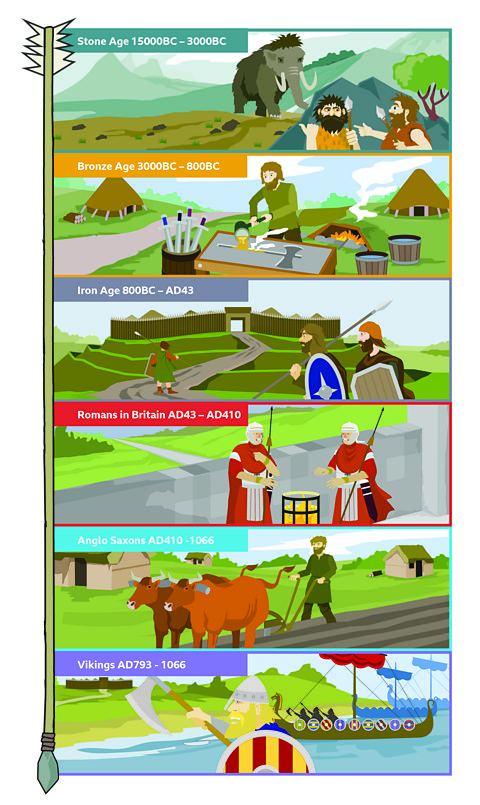
Farming and craftwork
Life on an Anglo-Saxon farm was hard work. All the family had to help out - men, women and children. Men cut down trees to clear land to sow crops. Farmers used oxen to pull ploughs up and down long fields.
The Anglo-Saxons were great craftsmen too. Metalworkers made iron tools, knives and swords. The Anglo-Saxons were skilled jewellers, who made beautiful brooches, beads and ornaments from gold, gemstones and glass.
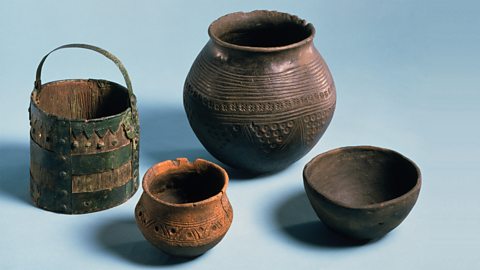
The Anglo-Saxons had armies, but their soldiers didn't fight all the time. After a battle, they went home as soon as they could and looked after their animals and crops.
Growing up in an Anglo-Saxon village
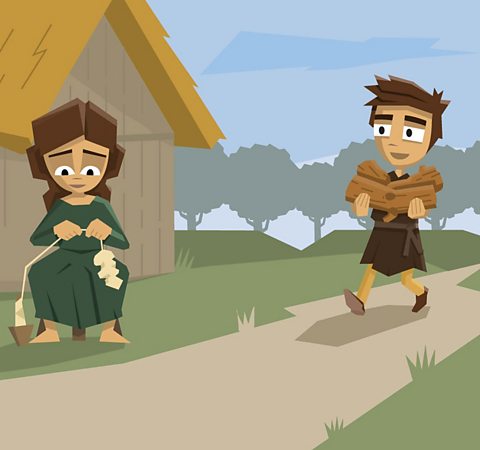
Anglo-Saxon children had to grow up very quickly. By the time they were ten, they were seen as an adult. They had to work as hard as any adult and would be punished as adults if they stole or broke the law.
Boys learned the skills of their fathers. They learned to chop down trees with an axe, plough a field, and use a spear in battle. They also fished and went hunting.
Girls worked in the home. They were in charge of housekeeping, weaving cloth, cooking meals, making cheese and brewing ale.


Only a few children learned to read and write. The sons of kings or wealthy families might be taught at home by a private teacher. The only schools were run by the Christian church, in monasteries. Some children lived there to train as monks and nuns.
How do we know all this?
When the Romans left, very few people wrote about Britain. A British monk called Gildas wrote in Latin in around AD530. However, he doesn't write much about the Anglo-Saxon settlements, since he is too busy writing about the British tribes fighting each other.
Later in AD730 an Anglo-Saxon monk called Bede wrote about the history of English people.
Anglo-Saxons also used runes (marked stones) but little has survived. Much of our evidence comes from archaeology: burials, grave goods, treasure hoards and building remains.
Look at the artefacts below to get an idea of what everyday life was like for Anglo-Saxons.
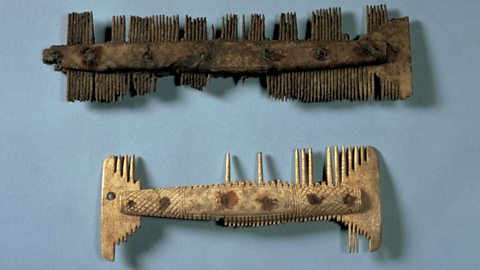
Image caption, These combs are made from bone. We don't know exactly what Anglo-Saxon hairstyles looked like, but we have found many combs so they must have had long hair and taken care of it.
Image caption, These shoes are made of leather, probably from a cow's skin. To make the leather strong, it was covered in dog, chicken and dove dung. Saxon shoes wouldn't last very long, only a few months, so they usually weren't decorated or made to look nice.
Image caption, This is a set of gaming pieces. They were used in boardgames, like we use counters and dice today.
1 of 3
Was this the āDark Agesā?
The āDark Agesā is another modern phrase we use today. The Anglo-Saxons would not have used this term.
After the collapse of Roman Britain, there was a big change from town and city life to the countryside. However, the new settlers brought with them astonishing skills, craftsmanship and language.
Activities
Activity 1: Anglo-Saxon village
Explore the village below and listen to Hild as she tells you about her life, friends, and family.
Did you find everything in Hild's village? Click on the question mark button to reveal all the things you can click on.
Activity 2: Quiz - Who were the Anglo-Saxons?
Teaching resources
Are you a teacher looking for more resources? These animated dramas explore Anglo-Saxon times, including Alfred the Great, Athelstan, the story of Beowulf and the end of the Anglo-Saxon dynasty at the Battle of Hastings.
“óĻó“«Ć½ Teach has thousands of free, curriculum-linked resources to help deliver lessons - all arranged by subject and age group.
Bitesize Primary games. gameBitesize Primary games
Play fun and educational primary games in science, maths, English, history, geography, art, computing and modern languages.

More on Anglo-Saxons
Find out more by working through a topic
- count2 of 8
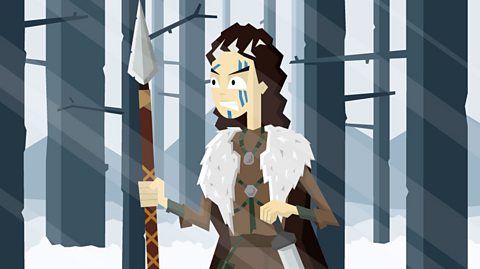
- count3 of 8
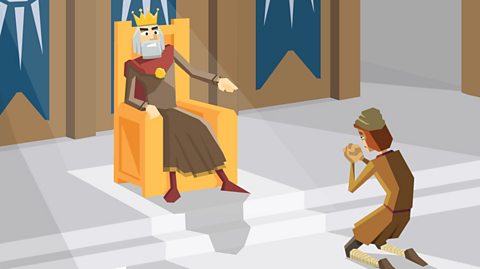
- count4 of 8
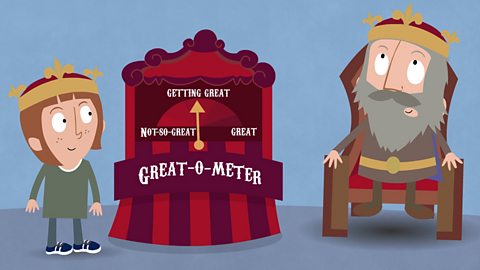
- count5 of 8
